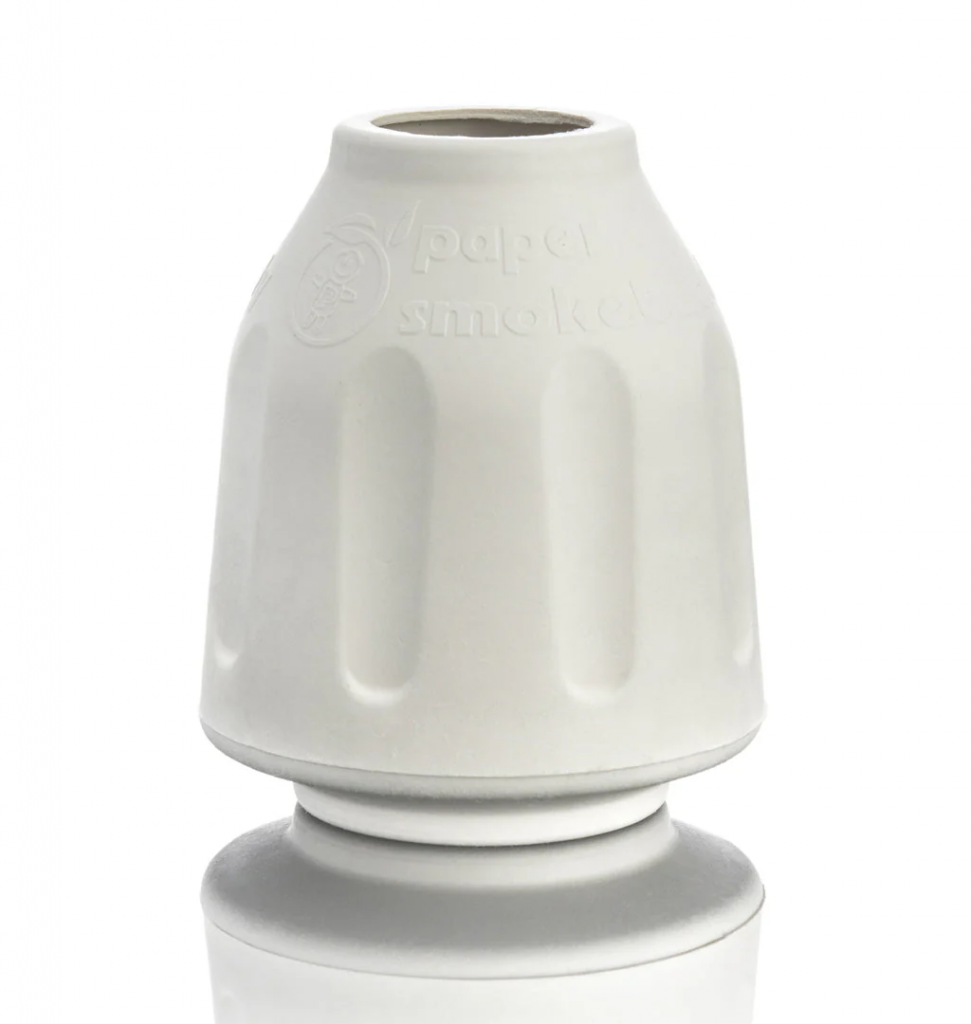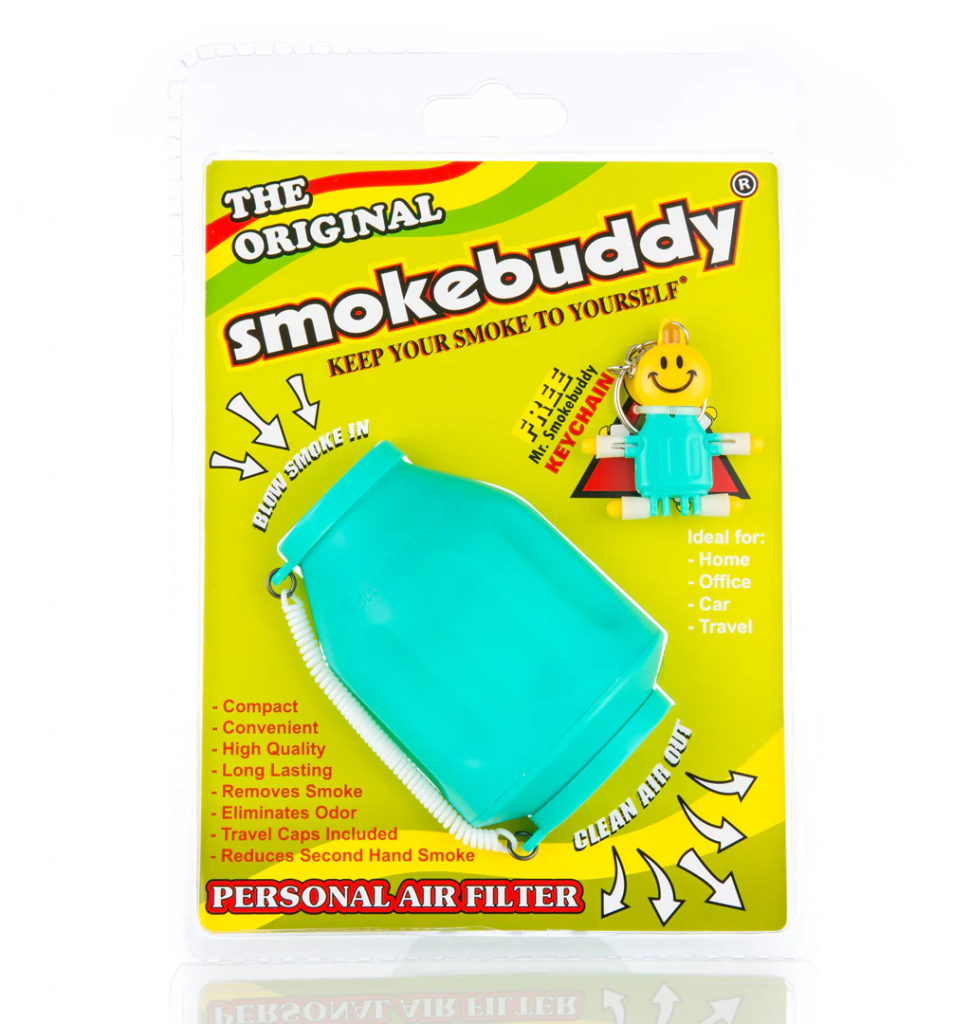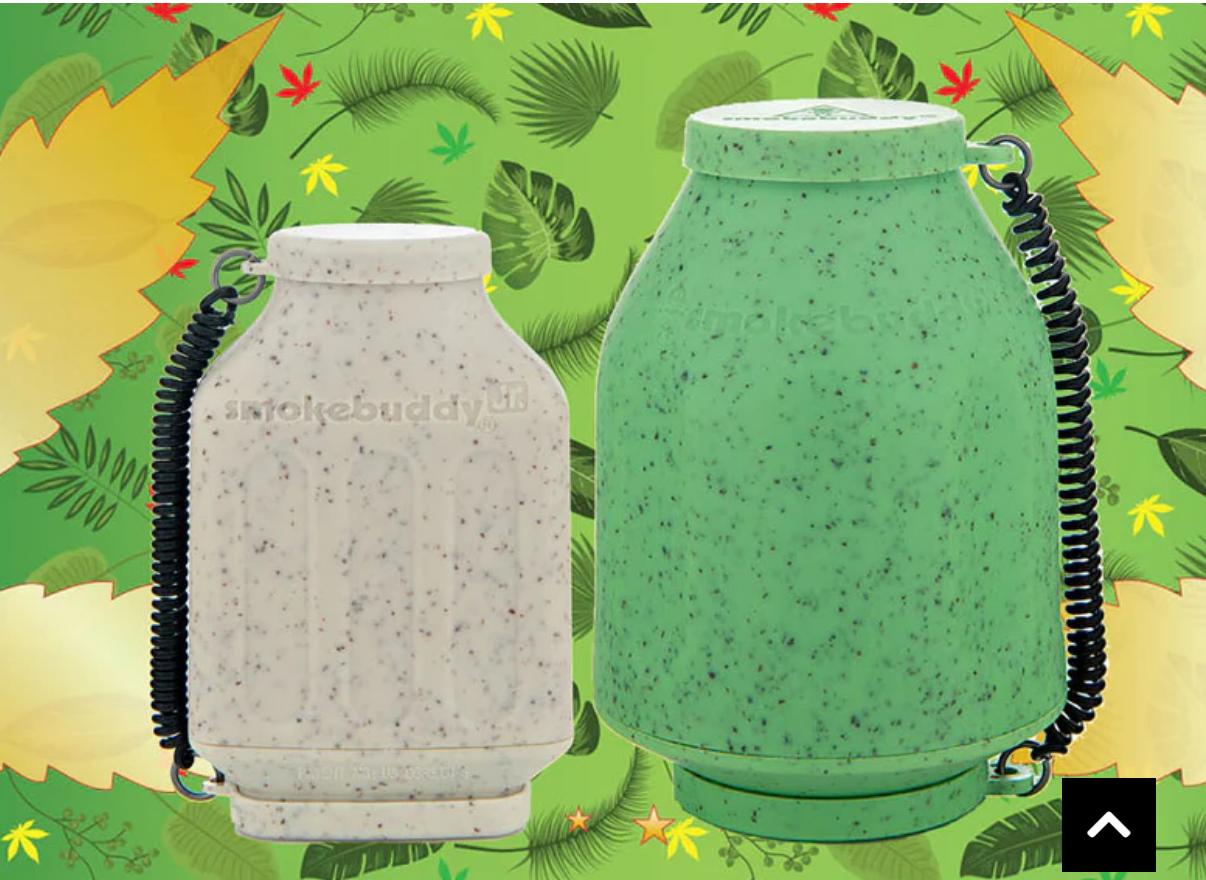Keeping your smoke low-key, your air clean, and your vibes right? That’s the goal—and eco-friendly personal air filters help make it happen. But to keep those filters working at their best, there’s one move every smooth smoker should know: maintenance. If you’re wondering how to clean eco-friendly personal air filters without messing up their performance or the planet, you’re in the right spot. This is the ultimate guide.
Eco-friendly filters aren’t just a one-and-done product. Many of them are built to last hundreds of sessions—but only if you treat them right. That means knowing when to clean them, how to clean them, and what to avoid if you don’t want to ruin your gear.
Whether you’re using your filter daily or only on those cozy indoor sessions, this guide breaks down how to keep it fresh and functional.
Before we get into the details, now’s a good time to peep Smokebuddy’s lineup of personal smoke filters. Use SLYNG23 for 20% off your purchase.
Why Cleaning Matters for Performance and Longevity

Before we dive into the how, let’s talk about the why.
Regular cleaning keeps your filter working like new. It stops your sesh from getting funky.
Here’s why keeping your air filter in top shape pays off long-term.
Filters Aren’t Invincible
Even the best eco-friendly filters have their limits. After dozens (or even hundreds) of uses, the inner materials can get clogged with smoke residue, oils, and particles.
That build-up can reduce airflow, slow down filtration, and leave you wondering why your exhales aren’t as discreet as they used to be.
As the smoke travels through the filter’s internal chambers, each puff deposits trace amounts of residue. Over time, these layers thicken, especially if you’re using the filter regularly without giving it a breather.
The more buildup there is, the harder it gets for your filter to function properly. You’ll notice increased resistance when exhaling and even changes in the smell of the exhale.
Neglecting to clean the filter isn’t just about losing performance, it can also result in bacteria growth in damp, unused crevices. If a filter is ever left out in a humid or moist environment and isn’t cleaned properly, it becomes a breeding ground. That’s not the vibe anyone wants mid-session.
A well-maintained filter means each puff feels as smooth and fresh as the first. And if you’re someone who values consistency, regular cleaning isn’t just helpful. It’s essential.
You’ll Get More Uses From Every Filter
Some plant-based eco-friendly filters are rated for 200+ uses. But that’s assuming you’re not letting them sit dirty for weeks at a time. Just like any reusable accessory, the better you care for it, the longer it’ll last.
Consider this: when you clean the exterior and housing regularly, you’re protecting the structural integrity of the device.
No buildup around air vents, no sticky residue that starts to eat away at components, and no warping from improper storage. Simple cleaning can double the usability period of your filter in some cases.
Over time, filters that aren’t cleaned develop a stale aroma that no one wants to smell. It taints the entire smoking experience and often requires replacing the filter prematurely. Not because it’s used up, but because it’s been poorly maintained.
That’s wasted money and wasted product.
Instead, routine upkeep ensures each exhale stays smooth, odor-controlled, and private.
Filters are an investment, and proper cleaning is how you protect that investment and get every bit of value out of it.
Clean Filter, Cleaner Air
The whole point of using a personal air filter is to keep your smoke to yourself and reduce the odor you’re putting out. A dirty filter? It can start doing the opposite: leaking odor, slowing down airflow, and even leaving residue in your hands or bag.
Think about the amount of invisible contaminants each exhale carries. A clean filter captures and contains those particles; a clogged one might just re-release them slowly over time.
This can create an environment where the air doesn’t feel quite as clean as it used to, and your sessions begin to feel stale.
Keeping your filter clean also protects your surroundings. You won’t be dealing with secondhand smoke clouds creeping out, nor will you have to explain lingering odors to guests, roommates, or family.
Clean filter, clean conscience, clean home.
Plus, there’s just something satisfying about knowing your gear is in top form. It adds to the overall ritual and respect you bring to each session.
What Kind of Filter Are You Using?
Not all personal air filters are built the same.
Knowing what kind of filter you have helps you clean it properly without damaging the internal components.
Here’s how to break it down.
Built-in Multi-Layer Filters
Some filters come with a built-in, multi-layer design that includes activated carbon, HEPA-grade fiber, and ceramic bead technology. These are usually sealed systems meant to be used until they reach the end of their lifespan.
They’re not meant for deep cleaning, but you can still wipe them down and keep the external surfaces fresh.
These filters are great because they offer high performance and little required maintenance. However, their internal layers can’t be accessed, so keeping the outside clean and dry is your best line of defense.
When buildup starts affecting performance, it’s time to responsibly dispose of and replace the filter.
While you can’t crack them open, keeping an eye on the condition of airflow is key. If you feel resistance increasing, odor returning, or residue building around the mouthpiece or exhaust, it’s likely the internal filtration is maxed out.
These models are popular for their ease of use, but just because you can’t clean the inside doesn’t mean you should skip cleaning the outside. Regular wipe-downs keep them hygienic and pleasant to use.
Modular Filters With Replaceable Cores
Some eco-friendly filters feature a modular design where the core or cartridge can be swapped out while the casing is reused.
These models are designed with longevity and ease-of-cleaning in mind.
The beauty of modular systems is the ability to clean every part without damaging the essential filtration components.
You can sanitize the casing, swap in a fresh cartridge, and get back to business within minutes.
These designs are perfect for users who smoke regularly and want something that can keep up with frequent use. They’re more eco-friendly than single-use models because you only toss the used core, not the whole device.
Cleaning the casing every couple of weeks, or every 20-30 uses, helps preserve that like-new feel.
Many modular designs are dishwasher-safe (check your manual), but a quick rinse and dry routine usually does the trick.
DIY or Refillable Filter Models
Less common but still on the scene, DIY or refillable filters allow users to repack carbon, beads, or fiber into reusable shells. These give you the most flexibility. But, they also require the most maintenance.
These types are great for long-term users who want full control over their filter setup.
You can customize the packing material, the density, and the airflow according to your personal preferences. However, this means you have to take full responsibility for cleaning and upkeep.
Disassembling the unit and replacing the filter media gives you an opportunity to scrub every nook and cranny.
Because you’re repacking it yourself, you can keep a tighter handle on cleanliness, freshness, and overall performance.
Just be careful not to overpack the shell—too much material can restrict airflow and reduce effectiveness. Keep everything dry and well-ventilated between uses to prevent bacteria or mold.
Step-by-Step: How to Clean Your Personal Air Filter

Let’s get into it. Here’s how to safely and effectively clean your eco-friendly personal air filter, depending on the model you have.
Step 1: Know the Cleaning Limits
Always start by checking if your filter is designed to be cleaned. If it’s a sealed unit with no replaceable or openable parts, skip anything involving water. Stick to wiping it down only. If it’s modular or refillable, you’ve got more options for a deeper clean.
Don’t assume that all filters are waterproof just because they feel durable. The internals of a filter often contain materials that can’t get wet without degrading. Moisture trapped inside the casing can damage carbon layers or attract mold.
If in doubt, look up your product’s manual or the brand’s site. Many eco-friendly companies offer detailed cleaning instructions and FAQs. Following those steps helps preserve both your filter and any warranties it comes with.
Step 2: External Surface Cleaning
Use a lint-free cloth or microfiber towel. Dampen it with a small amount of rubbing alcohol, natural surface spray, or just warm water. Gently wipe down the mouthpiece, casing, and any parts where your hands or lips usually go.
Focus on areas where buildup might accumulate—like edges and seams. Avoid getting moisture inside the air path unless it’s a washable unit. Don’t use harsh chemicals. They can degrade the casing or leave behind residues.
Once clean, set your filter on a dry towel or drying rack and let it air out for at least 30 minutes before your next session.
This quick clean should be done every few days, or after every handful of sessions. It helps keep your filter from becoming sticky, smelly, or discolored.
Step 3: Cleaning Inside a Reusable Shell
If you can open up your filter and access the inside, rinse the housing with warm water and mild soap. Use a soft-bristled brush or a cotton swab to remove any stuck-on residue. Rinse again with clean water and pat dry.
Avoid soaking parts for too long or using boiling water unless the brand recommends it. High heat and long exposure to water can warp plastics or rubber seals.
Let all components air dry completely before reinstalling a new or reused core. Never put a damp filter back into use. It can affect airflow and performance.
Doing this every 1–2 weeks depending on use keeps the inside of your filter feeling fresh and functioning right. It also lets you spot damage early if anything cracks, wears, or discolors unexpectedly.
Step 4: Monitor Filter Performance
Once your filter is clean and dry, keep an eye (and nose) on how it’s performing. If you notice smoke escaping, odor returning, or airflow becoming tight, it might be time to replace the core or retire the unit entirely.
Use a session log if you want to get technical. Track how many hits you’ve run through and compare airflow over time. This helps you anticipate when cleaning or replacement is due.
A well-maintained filter gives you reliable performance for the long haul. When in doubt, err on the side of replacing a worn filter rather than pushing it past its limits.
Tips to Keep Your Filter Fresh Between Cleans
A good cleaning routine goes a long way, but a few extra habits can help your filter last longer and stay fresher in between.
- Store your filter in a cool, dry place to avoid moisture buildup.
- Use a small case or pouch to protect it from pocket gunk or accidental spills.
- Don’t share your filter—it keeps things more sanitary and avoids spreading bacteria.
- Let it air out after use instead of sealing it up right away.
- Avoid storing it next to lighters, resin tools, or other items that carry strong smells.
These small habits can stretch the lifespan of your filter and keep every exhale as clean and low-key as possible.
Final Thoughts: Maintenance Is the Move
If you’re putting in the effort to smoke more discreetly and sustainably, cleaning your gear should be part of the package.
Knowing how to clean eco-friendly personal air filters isn’t just about function, it’s about respect. For your space, your lungs, and the planet.
Whether you’re wiping down a sealed model or deep-cleaning a modular shell, staying on top of filter maintenance keeps your sessions smoother and your impact lighter.
It’s an easy habit to build and a smart way to stretch the life of every tool you use.
